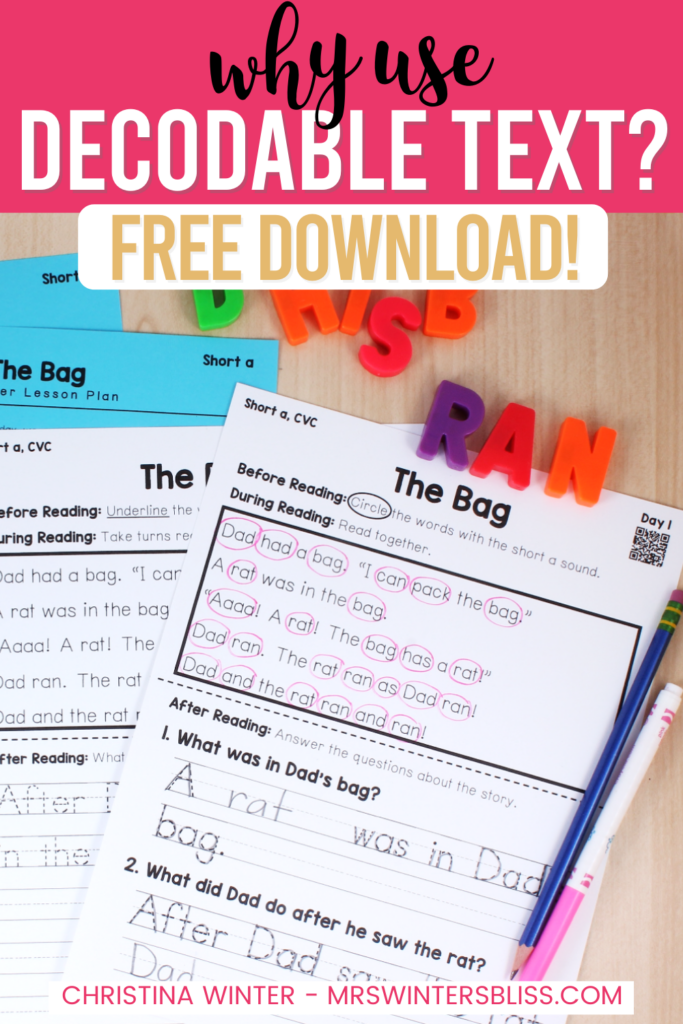
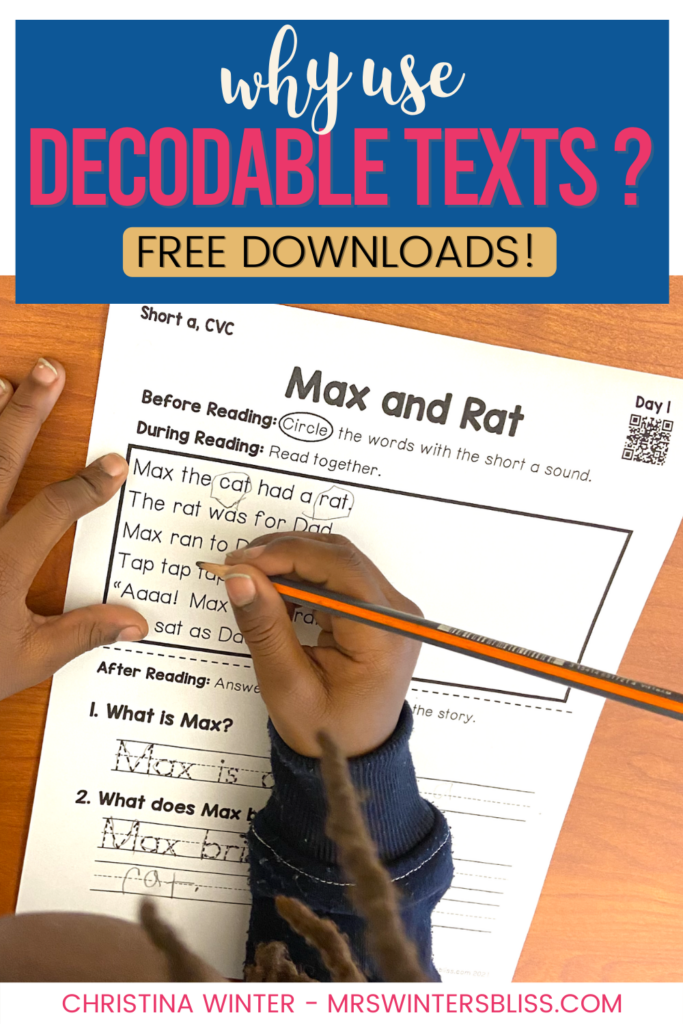
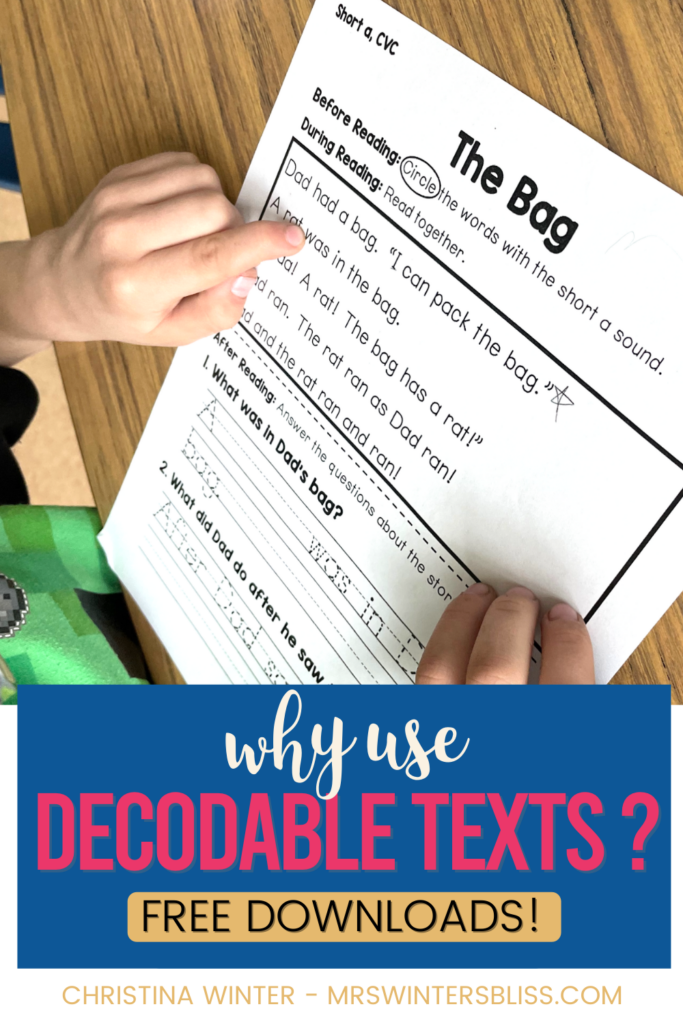
In this post I’ll answer the question “what is a decodable text?” and explain why you should use decodable texts in your kindergarten and first grade classrooms. I’ll discuss the difference between decodable texts and leveled readers. Finally, I’ll share my decodable passages and decodable books resources and FREEBIES that will allow you to begin using decodable texts in your classroom today!
Reading comprehension is the ultimate goal of reading. It allows us to enjoy a good story, learn something new or complete a task. It is necessary for academic and professional success, as well as personal growth. As teachers, teaching our students how to comprehend is one of the greatest gifts we can give. Knowing this motivates me to learn all I can about how to best help students learn to read with understanding.
In my journey to learn more, I recently enrolled in Dr. Deb Glasers, The Reading Teacher’s Top Ten Tools course. It is here where I was first introduced to the Simple View of Reading. This is a formula based on the widely accepted view that reading has two basic components: word recognition (decoding) and comprehension. When decoding and language comprehension work together, the outcome is reading comprehension. This formula is Decoding X Language Comprehension = Reading Comprehension.
It is important to note that this is a multiplication formula. This means that weakness in decoding or weakness in oral language will result in weaker reading comprehension. Both decoding and language skills must be strong in order for reading comprehension to take place.
In order for reading comprehension to improve, a student’s ability to decode must increase. A powerful way to improve a student’s decoding skills is through the use of decodable texts.
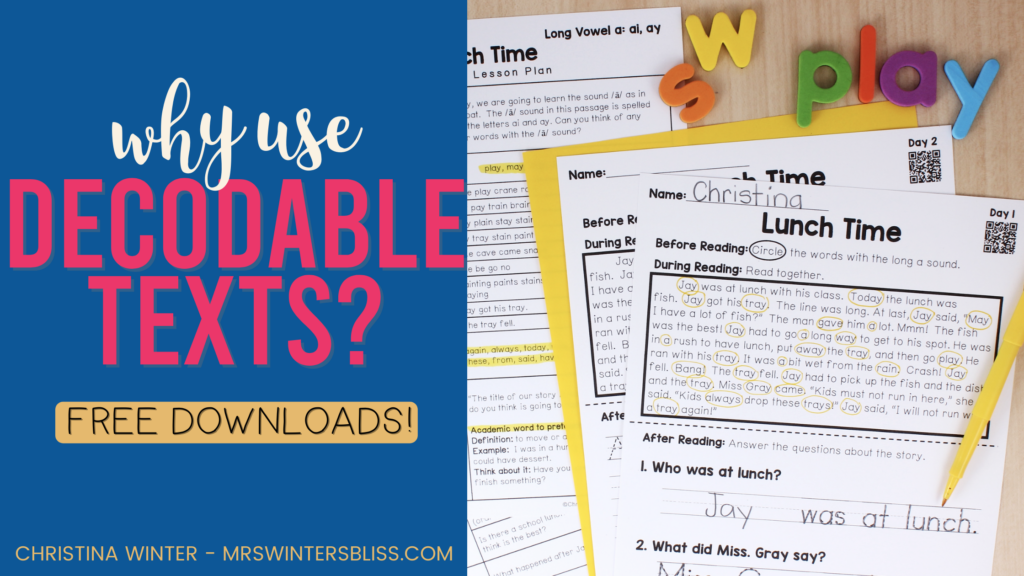
Today I’m excited to talk to you more about decodable texts. I’ll share what I have learned through my coursework, further research and in Wiley Blevins book, Choosing and Using Decodable Texts. I’ll explain what a decodable text is and why you should use them, discuss the difference between decodable texts and leveled readers, and leave you with a resource that will allow you to begin using decodable passages in your classroom!
What is a Decodable Text?
A decodable text is a text you use in beginning reading instruction. It is a story that is controlled based on the phonics skills you have taught your students up to that point in your scope and sequence. There is often a heavy focus on the target phonics skills for a specific week of instruction. For example, if you are teaching long a spelled ai and ay, your students might read a passage called Lunch Time.
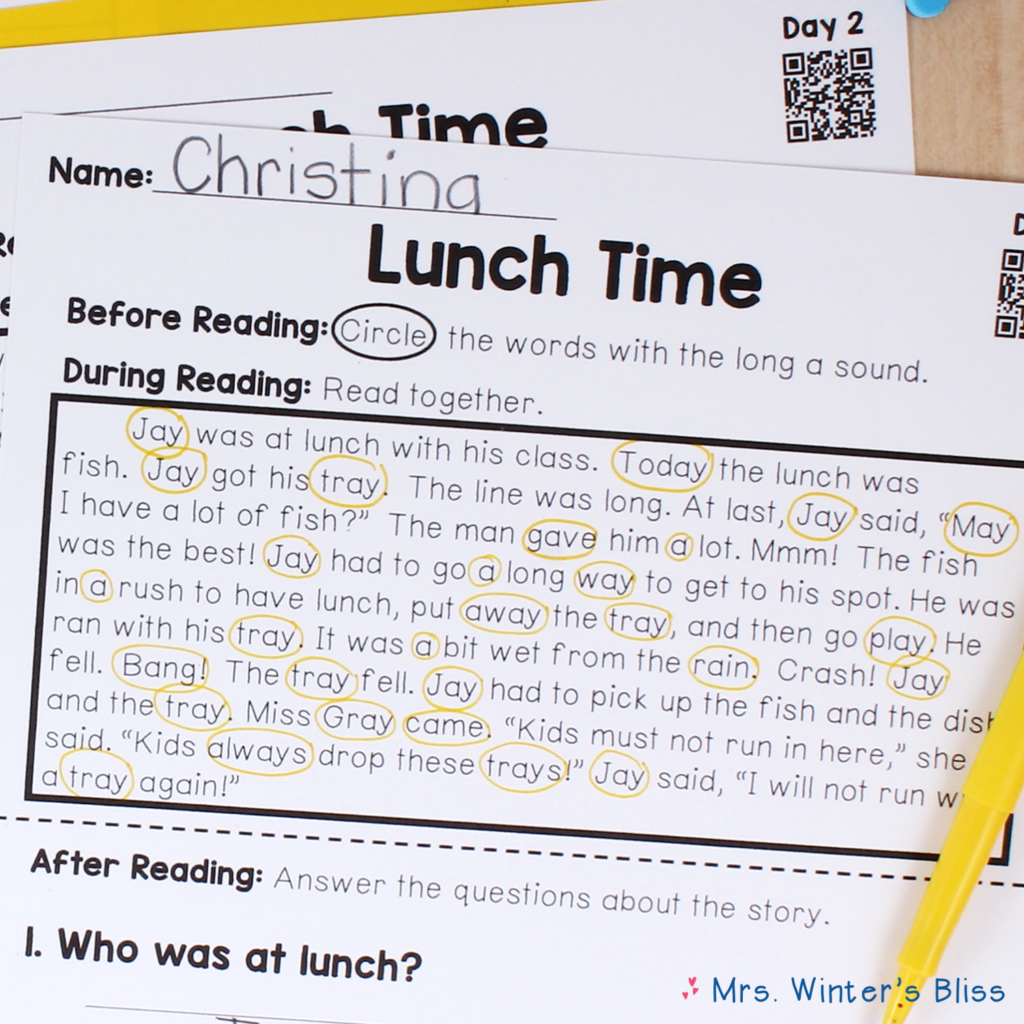
The majority of the words in a decodable text can be sounded out based on the sound-spelling relationships students have been taught. Decodable texts also include some high-frequency words students have learned.
Why Use Decodable Texts?
It is essential that there is a tight connection between what children read and what they have been taught. We know that children progress at a much faster rate in phonics when the majority of the time is spent applying the skills to authentic reading and writing experiences. Application is how the skills stick.
As Wiley Blevins reminds us, we would never teach a student chords for playing the guitar and then ask them to sit at a piano to practice. Unfortunately, all too often students are asked to read texts that have little connection to the phonics skills they have learned.
But decodable texts DO give students practice applying the skills that you have taught to real reading experiences. This connection is essential for building a faster foundation in early reading. As studies have shown, students who use decodable controlled text in their early reading instruction get off to a stronger start in their reading instruction.
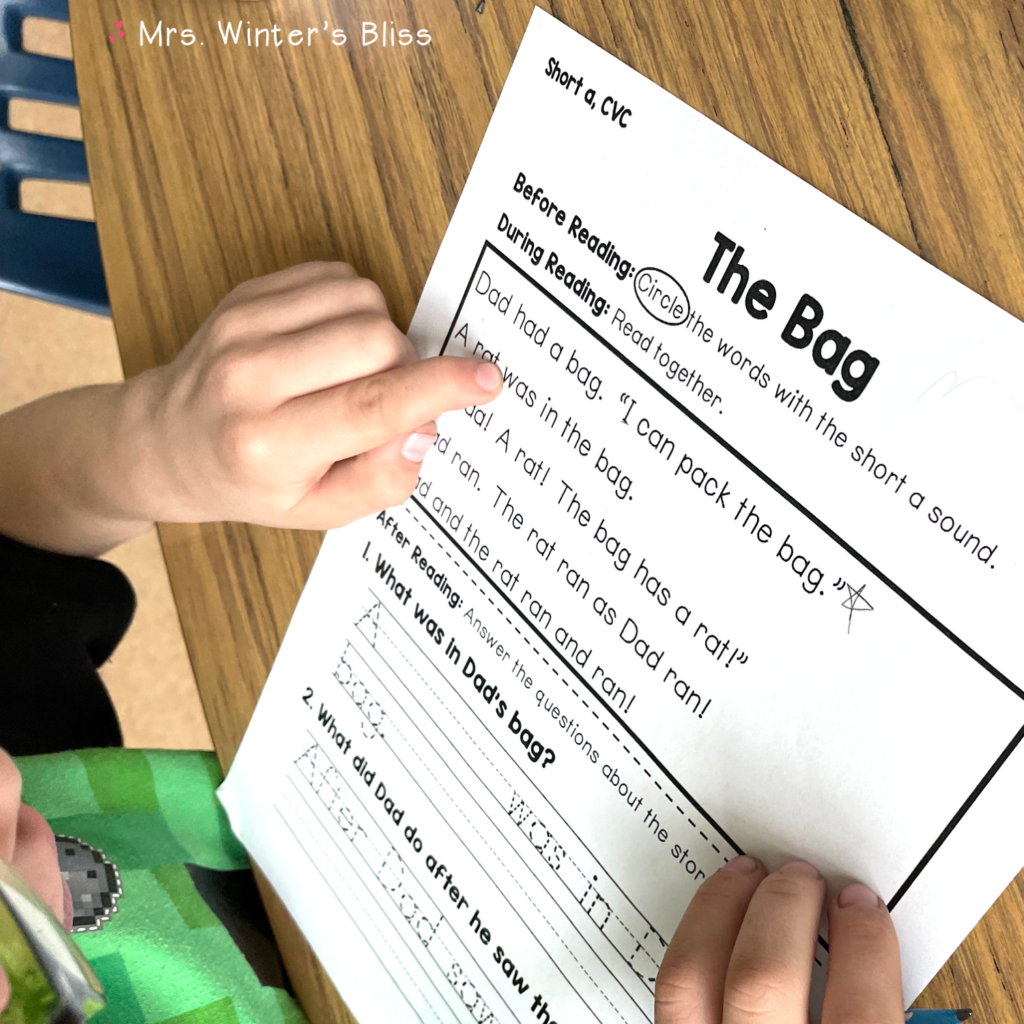
The use of decodable text also has a powerful effect on students’ motivation to read. Plenty of studies have shown that reading success breeds reading self-confidence and enjoyment of reading. When students read decodable text there are lots of words they can successfully sound out using their growing phonics skills. This success leads to a joy of reading!
Leveled Readers vs. Decodable Texts
When students read decodable texts they focus on the letters and spellings of the words on the page. They attack words using their phonics knowledge and decoding skills. This is a much more reliable strategy than using picture clues or simply guessing an unknown word, which is often what students are encouraged to do when using leveled readers.
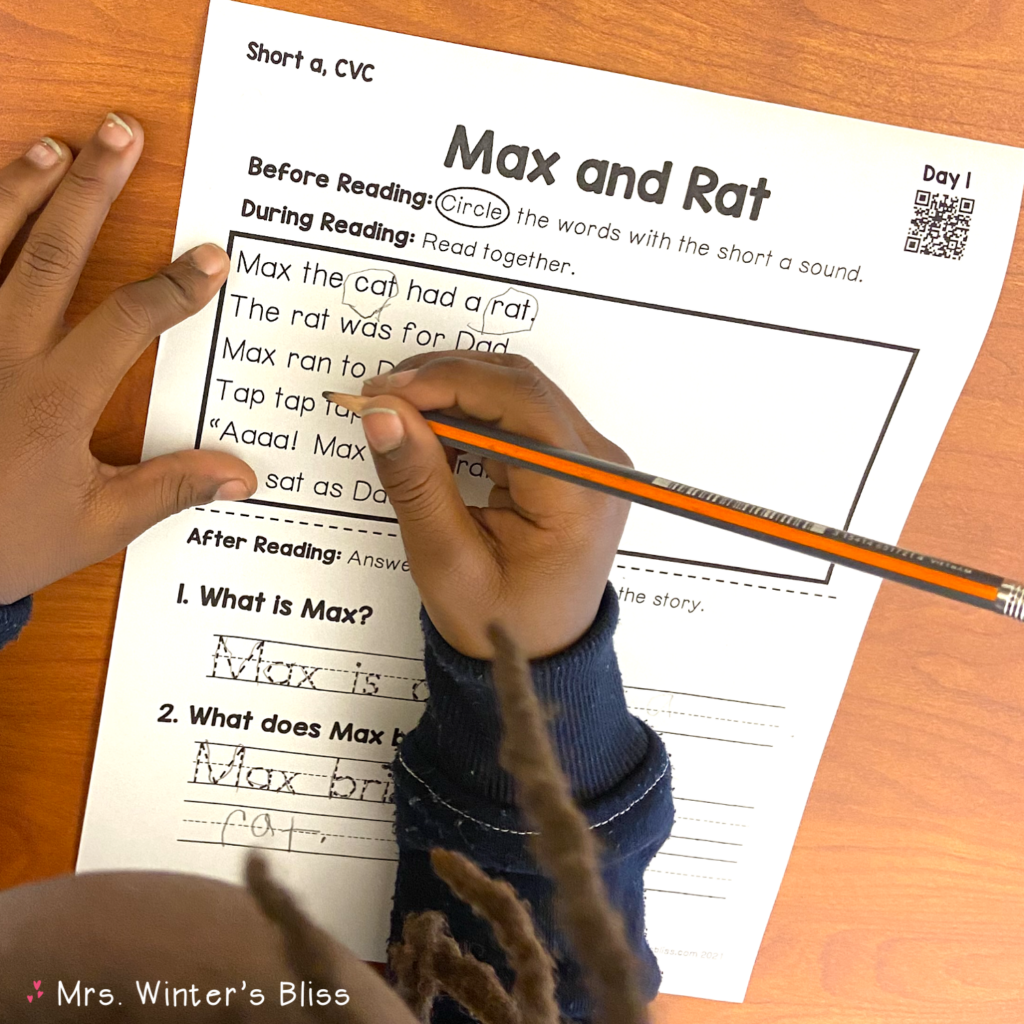
While initial letter and picture clues may work when students are reading simple, patterned books, they are unreliable and bad habits start. Students who rely on these strategies struggle dramatically when faced with words in isolation, texts with no pictures, or multisyllabic words. Decodable texts break students of these habits and force them to rely on their phonics skills.
Additionally, leveled readers may give teachers a false sense of reading growth. Students using leveled readers can take off fast and with relative ease because they are good at memorizing the words in these simple texts. These same students often “hit a wall” in first grade when text becomes more challenging.
Curious to learn more about decodable texts vs. leveled readers? In this post, I further discuss the difference between decodable texts and early leveled readers, and I explain when students should move from decodable to leveled texts
My Decodable Text Resources
Does all this information about decodable texts make you eager to give them a try? Wondering how and where to begin? No worries, I’m here to help you with two SoR-aligned resources! My Decodable Passages and my Decodable Books with comprehension questions have all you need to give your students a strong foundation in early reading!
Each resource contains 60 decodable texts (passages or full books)that align with a research-based, systematic phonics scope and sequence (included).
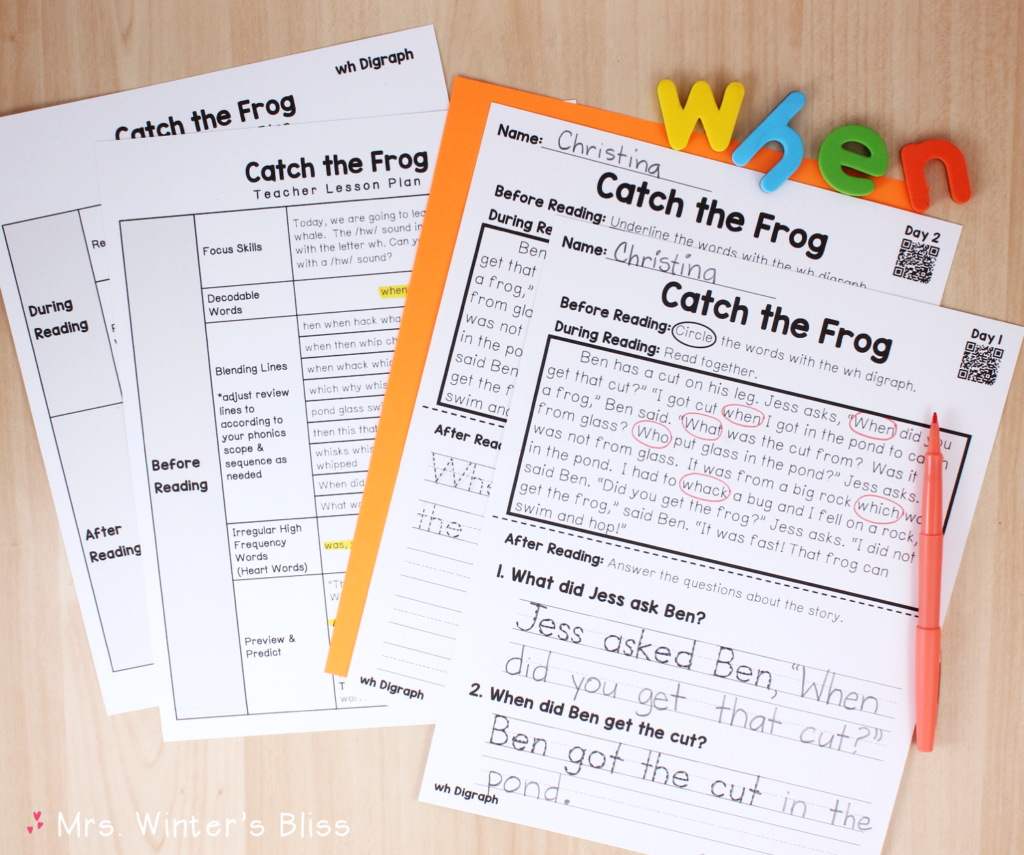
Included with each passage and book:
💗 explicit lesson plans with suggested pacing
💗 activities for before, during, and after reading
💗 blending lines to practice skills and frontload before reading
💗 written and oral comprehension response questions specific to the passage
💗 audio recording for those students who may need extra support
💗 write and retell story response questions
💗 printable passages give students the opportunity to re-read and build fluency
The decodable passages and books are phonics-based texts. They contain target phonics skill words, previously taught phonics skill words, and irregular high-frequency words.
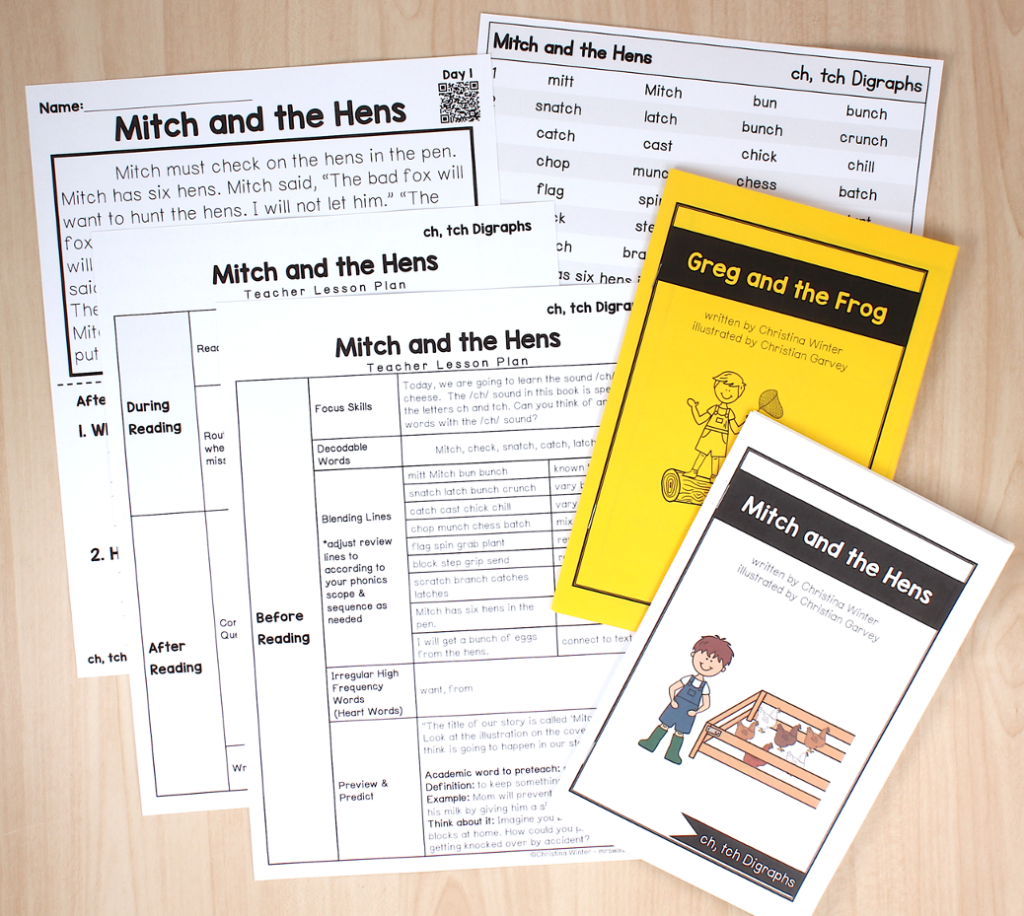
To help you begin to use decodable texts in your classroom, I am happy to offer these FREE decodable passages and 5 FREE decodable books! You’ll get decodable texts, explicit lesson plans for each passage and/or story, as well as activities for before, during, and after reading you can use to strengthen phonics skills!
Grab them here:
-
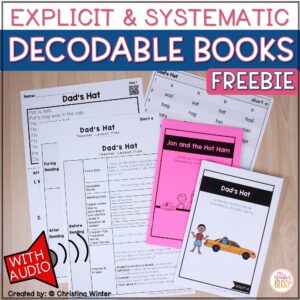 FREE Decodable Books with Comprehension Questions$0.00Rated 4.96 out of 5 based on 24 customer ratings
FREE Decodable Books with Comprehension Questions$0.00Rated 4.96 out of 5 based on 24 customer ratings -
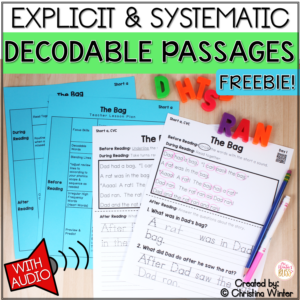 FREE Decodable Passages with Comprehension Questions$0.00Rated 4.98 out of 5 based on 40 customer ratings
FREE Decodable Passages with Comprehension Questions$0.00Rated 4.98 out of 5 based on 40 customer ratings
If you are looking for more options for decodable books, take a look at this blog post. In it, I share a list of high-quality decodable books for readers of different levels and ages.
The science of reading research shows us that the connection between what our students learn in phonics and what they read is imperative for building a strong foundation in early reading. Are you ready to learn more about exactly HOW to use decodable texts? In my next blog post, I share an instructional routine for using decodable texts in the classroom!
I hope the information and resources I’ve shared on decodable texts have motivated you to try them out in your classroom. They are a powerful tool that provides your beginning readers with the strong foundation they need for life-long reading success!
-shop this post-
-
Sale Product on sale
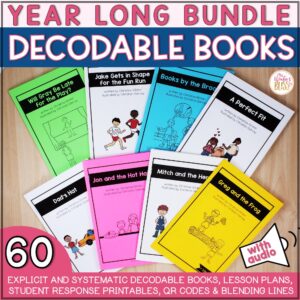 Decodable Books BUNDLE – Comprehension Questions aligned to Science of ReadingEarn 0 Reward Points
Decodable Books BUNDLE – Comprehension Questions aligned to Science of ReadingEarn 0 Reward Points$60.00Original price was: $60.00.$48.00Current price is: $48.00.Rated 5.00 out of 5 based on 6 customer ratings -
Sale Product on sale
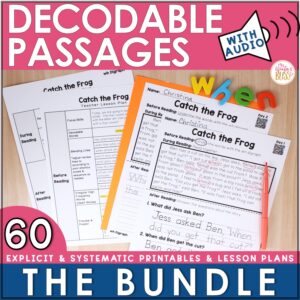 Decodable Passages with Comprehension Questions – BundleEarn 0 Reward Points
Decodable Passages with Comprehension Questions – BundleEarn 0 Reward Points$38.25Original price was: $38.25.$30.60Current price is: $30.60.Rated 5.00 out of 5 based on 11 customer ratings
–PIN for LATER–










